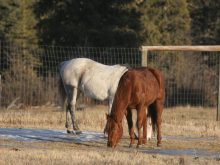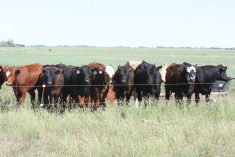In my previous column, I introduced the broad categories of microbial pathogen infections: opportunistic and primary pathogens.
Opportunistic pathogens are those that take advantage of some change in an animal to cause infection. Examples include shipping fever in horses after long-distance transport and pneumonia in calves when they enter feedlots.
Primary pathogens are a different beast altogether. This category of microbes usually causes disease whenever a susceptible host is infected. Put another way, the formula host + pathogen = disease applies.
Robert Koch, one of the fathers of microbiology, was a 19th century German physician who developed three key features of these pathogens when working on anthrax. They are now referred to as Koch’s postulates:
Read Also

Manitoba pork exports gain new market ground
Manitoba’s pork trade pivoted from China over the last five years, while Japan is remains the largest customer and South Korea and Mexico market footholds have grown
- The pathogen must be present in every case of the disease (and not in healthy animals).
- The pathogen must be isolated and grown in pure culture (pathogen must be the only one present).
- The disease is reproduced if the pathogen is given to a susceptible host.
Healthy animals have a range of ways to keep infections at bay. We can think of primary pathogens as being so good at causing infections that they don’t require the same alteration in an animal’s defence mechanisms to cause disease.
Of course, immunity, either through previous infection or vaccination, can alter this direct relationship. From an evolutionary perspective, primary pathogens’ strategy is to cause illness, so it can be spread. In a population of animals, there will usually be several individuals that are infected at a time. And with these pathogens, almost all infected individuals get the disease.
A classic example of a primary pathogen is anthrax. Caused by the bacterium Bacillus anthracis, anthrax is an important disease of cattle, horses, bison, sheep and goats.
Animals ingest or inhale anthrax spores that are present in the environment, usually the soil. These spores germinate and as the bacteria proliferate in the body, they release toxins. The toxins cause severe edema and tissue death, rapidly killing the animal.
Affected animals are often found dead with no previous clinical signs. If the carcass is opened, such as by scavengers, bacteria form more spores that are released in the environment. These spores are then a potential source of infection for new animals. If we could assign a goal to anthrax, it is to kill its host rapidly so it can produce more spores.
Canine distemper virus is a well-known primary pathogen that infects dogs. Related to measles in humans, distemper nearly always causes disease when unvaccinated puppies and dogs encounter it.
It spreads through contact with infected secretions. The virus initially proliferates in lymph nodes, then spreads through the blood stream to many different organs.
Dogs with distemper can become ill with pneumonia, diarrhea and brain inflammation. This illness generates secretions that are loaded with viruses, which increase its chances of finding another susceptible dog.
Vaccinations prevent distemper, which is why it is not common these days. Dogs that are fully vaccinated or that have recovered from natural infection are generally immune.
Strangles is a common primary pathogen in horses. It is caused by Streptococcus equi, a cousin of the bacteria that causes shipping fever.
Horses, especially young animals, are likely to develop the disease if they are exposed to the bacteria. Horses with strangles develop abscesses in the lymph nodes of the throat and jaw. These can be painful and press on the airways and esophagus, making breathing and eating difficult.
Vaccines are available and horses that recover have reduced chances of developing the disease again.
In these three examples, we see that the pathogen’s objective is to make its hosts sick, or dead in the case of anthrax, so it can spread further. It is a different strategy than that used by opportunistic pathogens, which generally live in peace with their hosts and only cause disease if something changes.
Dr. Jamie Rothenburger, DVM, MVetSc, PhD, DACVP, is a veterinarian who practices pathology and is an assistant professor at the University of Calgary’s Faculty of Veterinary Medicine. Twitter: @JRothenburger















